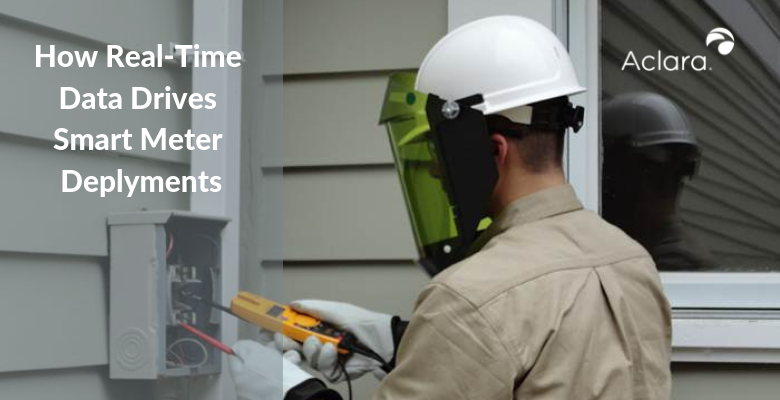Utilities that embark on long-term projects such as deploying meters often face resource constraints that prevent them from using the internal staff on the project. As a result, they may outsource entire projects including staffing, warehousing, hiring, training, reverse logistics, and overall management of the project to third parties.
Smart metering projects are especially complicated because inventory availability and delivery timeframes often shift, so utilities need partners and solutions that can quickly scale resources up and down as necessary, yet still closely monitor progress. When frequent scaling is required, utilities also need partners that can facilitate real-time cross-communication between all parties on the project to maintain schedule and efficiency.
Real-Time Data is Key to Project Success
When one smart-meter manufacturer needed to deploy 1.2 million electric meters and gas modules over a service area of 47,000 square miles, for example, it looked for a partner that could:
1: Provide an end-to-end solution to include full staffing, warehousing, hiring and training of personnel, reverse logistics.
2: Manage the entire process using a workforce management solution.
Real-time data was key to the utility. The company wanted to be aware of all installation activity as well as problems, whether these were occurring 4 miles or 4,000 miles from the office. It also needed a solution that could scale quickly, provide visibility into the project at a high level and let it manage field-level installation teams.
Keeping the Project on Track
Aclara was chosen for the project, primarily because its proprietary workforce management solution, ProField, could manage the entire process and show in real time what was happening with staff, inventory, customers, and problem escalation in real time. But every bit as important as monitoring progress was the data that the software offered not just to the utility, but also to its partners.
When quick scaling was necessary, ProField gave all partners in the project the flexibility to collaborate and create new resource plans and schedules so that work could go on, but deadlines stayed on track. For one annual gas deployment milestone, for example, the gas deployment schedule needed to be compressed in half, from 12 to 6 months, yet the total quantity of meters remained the same.
Project visibility and cross-communication between the project management office, meter manufacturer, utility, and installation teams enabled Aclara to staff-up to 50 employees in only 30 days to keep the project on track. ProField offered the utility flexibility of scale for planning and a high-level project view, but also clear visibility of work being performed at every moment of the day.
Results Tell the Story
As a result:
- Every milestone in the deployment was hit, despite any inventory or schedule challenges.
- All SLAs including customer satisfaction, safety, and data quality were met.
- Aclara exceeded the project install targets by 50% for both electric and gas in one of the most rural states in the country.
Choosing the right tools is always key to project success. For utilities planning deployments, selecting the right company and software for managing deployment projects may mean the difference between success and failure.

